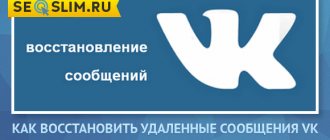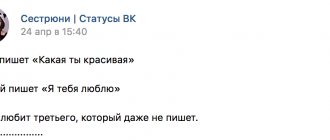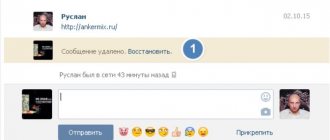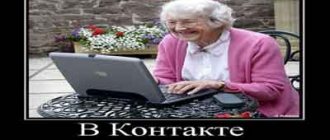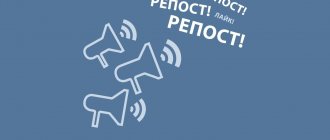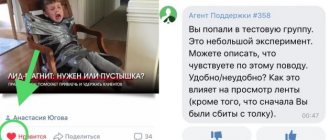Some people think that it is not at all necessary to use emoticons when correspondence, and for some it even outright infuriates them. However, to deny that they have firmly entered our lives is frankly stupid. I will give several examples from life demonstrating this.
One of my friends, who actively uses various Internet messengers, such as WhatsApp, Telegram and chats on social networks, once shared her problem in a heart-to-heart conversation: her young boyfriend does not use emoticons at all! Without them, she could not understand where he was joking and where he was being serious. This created big problems in communication and constantly led to scandal. She was seriously afraid that this would all lead to a break in the relationship. In the end, everything ended well. He started using emoticons, she began to understand him better and not worry that he was making fun of her, in short, a happy ending.
The second conversation, with another friend, was not on the topic of emoticons, but briefly touched on this topic. She also shared her observations. Due to the nature of her activity, she communicates with many people, both in correspondence and in person. And so, in her opinion, it is simply impossible for many people to communicate without emoticons. In life, they cannot connect even two words, and when you read their messages, generously strewn with different faces, it becomes very clear what they want to say. This is an interesting observation.
Of course, there are a lot of haters who consider all these “yellow heads” absolutely unnecessary and even harmful, but the distribution throughout the world and the great variety of a wide variety of emoticons for all occasions clearly shows that they remain in the minority.
Who invented emoticons and when?
The first emoticons looked very simple.
There are several versions of the appearance of the emoticon. It is alleged that the first of them appeared in the late 50s and early 60s. The author of the very first one is considered to be the American artist Harvey Ball. In 1963, there was great competition between insurance companies, many of them were forced to lay off employees, and in the struggle for clients they were forced to look for non-standard approaches. One company commissioned Harvey to create a positive design that could be pinned to clothing. As planned, this drawing was supposed to give the client positive emotions. In just 10 minutes, the artist came up with such a drawing - it was the first “smile” emoticon. They paid him some 43 dollars for it and parted with the world. Who would have guessed that these pictures would appeal to customers so much? Very soon the company ordered 10,000 of these images!
It is alleged that the first of them appeared in the late 50s and early 60s. The author of the very first one is considered to be the American artist Harvey Ball. In 1963, there was great competition between insurance companies, many of them were forced to lay off employees, and in the struggle for clients they were forced to look for non-standard approaches. One company commissioned Harvey to create a positive design that could be pinned to clothing. As planned, this drawing was supposed to give the client positive emotions. In just 10 minutes, the artist came up with such a drawing - it was the first “smile” emoticon. They paid him some 43 dollars for it and parted with the world. Who would have guessed that these pictures would appeal to customers so much? Very soon the company ordered 10,000 of these images!
The history of the electronic smiley, which began to be used in computer programs, started in 1982. Its authorship is attributed to the American scientist Scott Fahlman from Carnegie Mellon University. On September 19, he proposed putting symbols on the university information board for comic announcements and
Its authorship is attributed to the American scientist Scott Fahlman from Carnegie Mellon University. On September 19, he proposed putting symbols on the university information board for comic announcements and for announcements that were not humorous.
for announcements that were not humorous.
Since then, emoticons have become a part of Internet culture and even, one might say, Internet etiquette. They are present wherever communication takes place, and their number is so huge that you can tell everything you want with just pictures.
Exploring nonverbal communication
Quite a lot of research has been carried out around the world on non-verbal communication during correspondence - how we perceive the interlocutor when looking at the text. Our scientists decided to find out how the length of messages differs between men and women, who uses emoticons and how, as well as reactions to a new type of interaction. Everything here turned out to be quite predictable: the length of messages is longer for women than for men, women use emoticons more often, and men cannot always understand what they mean.
American scientists led by Celia Klin from Binghamton University (as reported by The Washington Post) surveyed 126 respondents who often write on the Internet and found that a period at the end of a message tells them that the response is cold. And the shorter this answer, the more clearly this manifests itself. An exclamation mark, on the contrary, looks like lively participation in the dialogue and involvement of the interlocutors.
But besides dots, there are other ways to convey your emotions in writing. The number of brackets indicates the different feelings of the person writing the message. What are they talking about?
- ) One bracket means acceptance of the interlocutor, pleasure from communicating with him.
- )) Two brackets - that it is funny, the interlocutor smiles.
- ))) Three parentheses or more say: I laugh when I write (and I invite you to laugh). How loud and fervently you can understand by the line of parentheses lined up after the words.
But now everything is changing again: many interesting, speaking emoticons have appeared that color the text much brighter than brackets.
"Thank you"
There are several ways to say thank you. If there is an exclamation mark at the end, it is gratitude with a hint of delight. “Thank you” without a sign at the end is an appreciation for participation or attention. “Thank you” with a period at the end indicates the end of the conversation, a statement of fact.
Dot
What information does it convey? If it is not there, then it seems that the person is ready for dialogue and even an argument; he does not assert, but voices his opinion. If there is a point, then the opinion seems to be rigid and not subject to discussion.
We are just learning to communicate in a new way, and it is a very exciting process. We learn to write and read in such a way as to understand each other, to think on the same wavelength in new conditions.
It seems that the time has come for introverts who can now live in peace, without being tormented by unnecessary contacts. You can leave the network, pause communication, respond to a message when you are in the mood, and not when someone is calling at the top of your lungs.
This is a time for self-determination, for personal choice - when, with whom and why to communicate. And let it be a joy to everyone.
virtual realityinternet behavior patternscommunication correspondenceemoticonssocial networksfeelingsemotions
Decoding the meanings of popular emoticons
Now there is a separate emoticon for each emotion or event. One of my friends told me that he and his friends have a special emoticon - a man in a hat with earflaps, holding a bottle of vodka and playing the balalaika - it means “Hey, guys! I'm not in a good mood today. How about getting together in the evening and chatting in good company with a bottle of vodka and a good snack?” Agree that writing in words takes much longer than sending a symbol. This example is a little specific, because... not all sets have similar images, but the most popular emoticons, known to everyone, are sure to be in any social network. Let's decipher the most popular of them.
| Designation | Other options | Decoding |
 | :-), (:, (-: | Smile |
 | :-(,):, )-: | Sadness |
| :.( | :,( | Tears |
 | XD | Very funny |
| :3 | =3 | Tenderness |
 |  | Wink |
 |  | Seriousness |
| :/ | :\ | Chagrin |
| %) | %( | Shock: in the first case pleasant, in the second - not |
| :.) | :.D | Laughter to tears |
| :R | :-P,=P,:b, :-b, :p | Show tongue |
| :* | :-*, =* | Kiss |
| :-! | :! | Disgust |
| :@ | Scream | |
| :X | :-X, :x | Secret |
This is a set of the most common emoticons, which probably everyone knows and already automatically puts the necessary icons in their messages.
Networking Norms
There are certain boundaries of business communication that should not be crossed. The use of emoticons, stickers and informal vocabulary is possible in friendly communication:
- With classmates;
- With neighbors;
- With relatives;
- With comrades and friends.
But when it comes to business correspondence or negotiations, your liberties may be misunderstood. Modern norms were established long before us, and the sphere of official communication is too conservative to try to change it right here and now.
Just imagine how out of place emojis would look:
- In the text of the agreements;
- In technical documentation;
- In official orders;
- In letters of recommendation;
- In tax returns;
- In the reports of inspection organizations.
It would look too ridiculous against the background of the dry and businesslike style of the rest of the text. So if you want to bombard someone with emojis, make sure it's even appropriate and worth it. If you have never used parentheses in correspondence before, the interlocutor may misunderstand or, what’s better, suspect you of alcohol intoxication.
What does ) parenthesis mean in correspondence?
The smiling and contented “smile” emoticon speaks for itself. The decoding is simple: it means that the person who sent it definitely wants to show his positive attitude towards the subject of the conversation or towards the interlocutor himself. If the smile is upside down, then the meaning of the emotion also changes to the opposite - the conversation is upsetting and the emotions are negative.
Of all the other emoticons, this one has undergone the most changes. Initially, his appearance was like this and had a full set of facial features: eyes, nose and mouth.
Initially, his appearance was like this and had a full set of facial features: eyes, nose and mouth. But people, as always, are in a hurry and are too lazy to draw an extra line, so the nose quickly got lost somewhere and this is what was left It often happened that I didn’t want to look for a colon on the keyboard and so the smiley lost one eye .) and soon the second ) Then It became important how many brackets a “smile” has - the more there are, the greater the emotion. For example, ) means that the person simply smiled, but this one - )))))))))))))))) means that he is rolling on the floor laughing.
But people, as always, are in a hurry and are too lazy to draw an extra line, so the nose quickly got lost somewhere and this is what was left It often happened that I didn’t want to look for a colon on the keyboard and so the smiley lost one eye .) and soon the second ) Then It became important how many brackets a “smile” has - the more there are, the greater the emotion. For example, ) means that the person simply smiled, but this one - )))))))))))))))) means that he is rolling on the floor laughing.
Similar changes affected the sad emoticon. He was also left with basically one bracket ( depicting sadness, and the more brackets, the sadder ((((((((((((((((((((( indicating great grief).
Those weird Russians
Americans are perplexed: what kind of strange brackets do Russians put when they write something? How do you mean: “Thank you for stopping by)”? What is this? For what? If this is a smiley, then why from a normal one?

